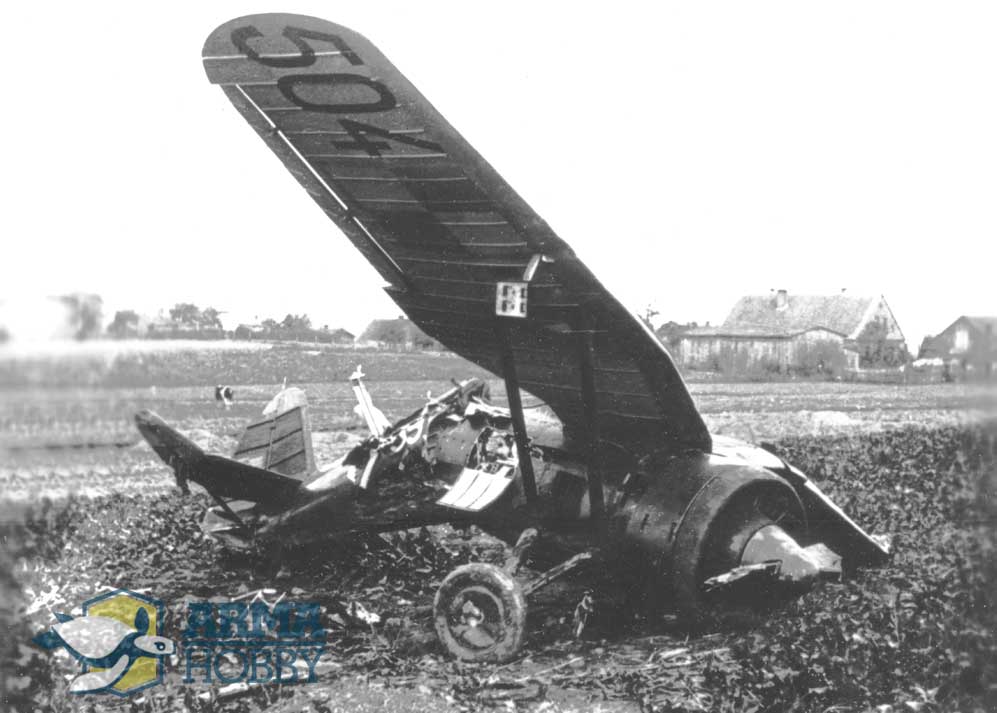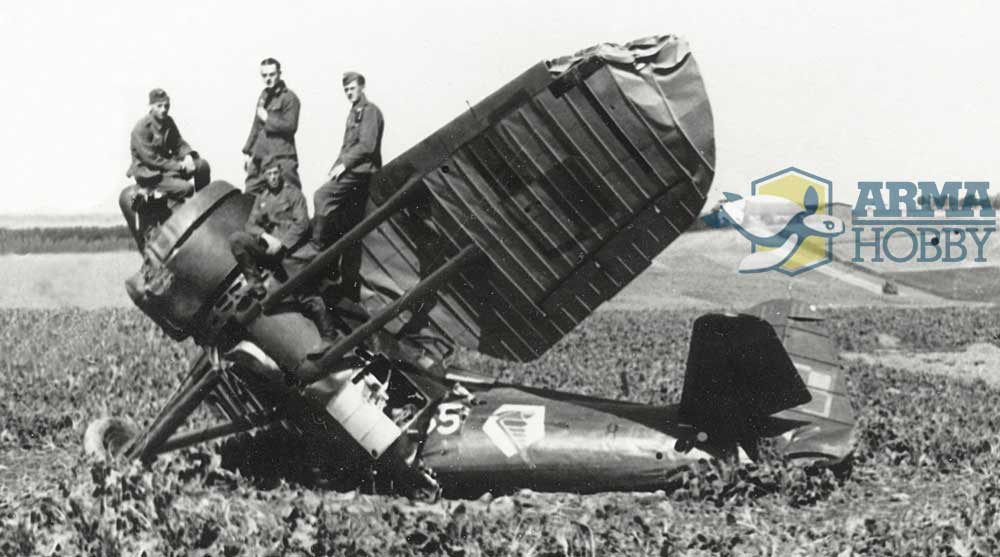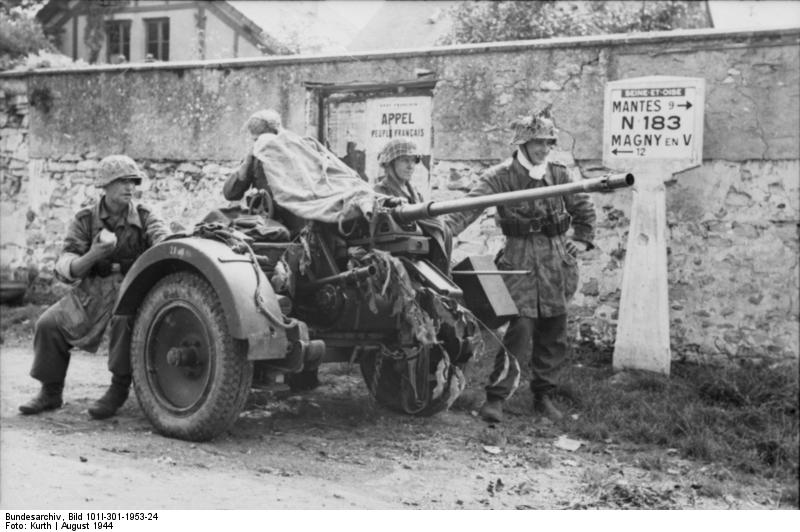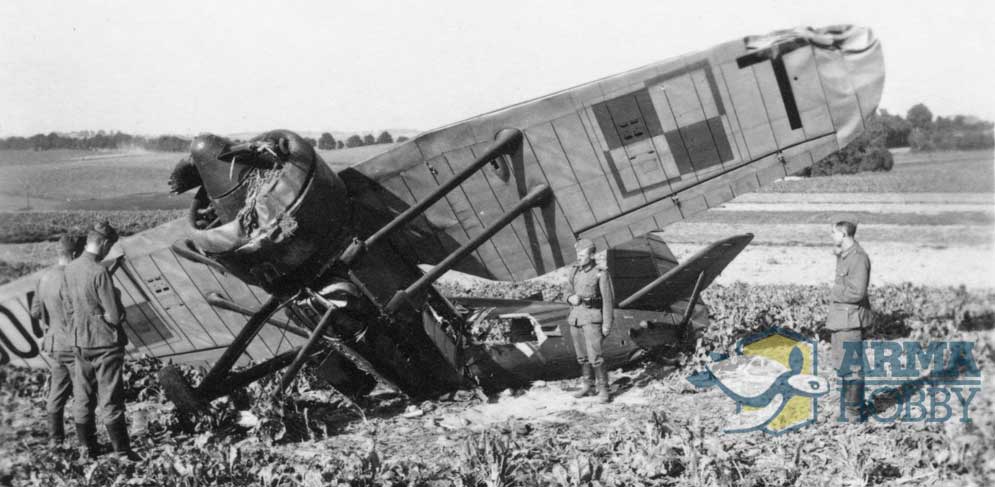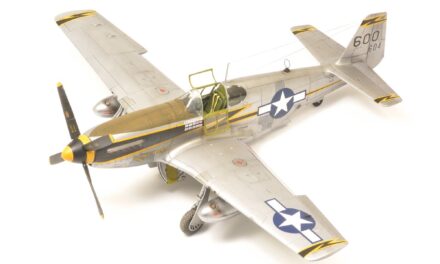Dramatic decision…
…it was on 2nd September 1939 early afternoon the III/4 Fighter Wing from Toruń has got surprising order from „Pomorze” Army aviation commander Col. Bolesław Stachoń – to attack German ground forces from „nap-of-the-earth” level flight. It was obvious for the pilots that the low-altitude charge of light fighters against well-defended group of enemy is at least risky if not suicidal business. That was the reason why commander of the Wing, Cpt. Florian Laskowski, during the pre-flight briefing has decided that the task will be fulfilled according to the order by both Wing’s squadrons, but only one squadron will strafe the enemy, while the second will perform the air cover on the higher level.
The course of the briefing on the Markowo airfield we know from several accounts, including 141. Squadron commander Cpt. Tadeusz Rolski’s official report and memoirs of Polish top-scoring ace Stanisław Skalski, then pilot of 142. Squadron, published in his fascinating book Czarne krzyże nad Polską (“Black Crosses over Poland”).
– Who of you will volunteer to attack against the armoured coumns? – asked Cpt. Laskowski the squadron commanders. The only answer was silence. So Captain decided to draw the tasks for the squadrons. 141. Squadron picked the ground attack, and the 142. – air cover. Finally Laskowski announced: – The 141. for strafing the ground forces I will lead myself, 142. under Cpt. Leśniewski’s command will fly for sweep. Heroic commander of the Wing, fully understanding how risky the task was, has decided to take full responsibility for his decision and lead subordinate pilots by example
Charge against Germans
A few minutes before 3 p.m. we were sitting in the airplanes, waiting for the 141. Squadron take-off – writes Skalski in his memoirs. – First was Cpt. Laskowski’s flight. When they took-off, the second flight led by Cpt. Rolski has started. The third flight was led by 2nd Lt. Pisarek. Whole squadron flew low over our heads in combat formation heading to the target. We were looking at them till they dissapeared behind the horizon.
They have seen his commander and some of the friends for the last time.
After take-off the squadron led by Cpt. Laskowski met low-flying Dornier Do 17, but decided to ignore it, following the main order. Already on Polish side of the frontline the low-flying fighters have been shot from the ground. On German side shooting was even more intense. The squadron has begun the attack. We know its course from accounts of those, who survived.
Cpr. Józef Jeka:
After reaching the city of Gruta by low-level flight we met the enemy forces and started strafing along the Gruta-Łasin road – wrote in his report Cpr. Józef Jeka, who flew in three-airplane flight led by Laskowski. After flying some distance I have noticed that the commander has been shot down and crashed into ground.
Cpt. Tadeusz Rolski:
Polish and German ground units were spreaded in lines and small groups – reported Cpt. Rolski, who led the second flight. There were small groups of enemy cars and single tanks. No organized column has been seen. Attacking such scattered targets was difficult. I have not seen any effect of our shooting. Cpt. Laskowski’s flight turned to the north and west [to the left]. I, with my flight after flying over the enemy and shooting at them turned to the south [to the right]. I found quiet area and turned back to attack ordered area again.[…] The ground fire during second attack was as dense as previously. Lt. Pisarek’s flight followed flight of Cpt. Laskowski. During the return to base I have seen no friendly airplanes except my flight. Rolski’s decision of turning to the south, while most probably spontaneous, turned out to be right. His whole flight has returned safely, contrary to the 2nd Lt. Pisarek’s flight.
2nd Lt. Marian Pisarek:
– After reaching Osa river I turned left and left again so I was heading south-west – reports 2nd Lt. Pisarek. – I was constantly shooting at the groups of enemy horses and cars. Suddenly I have noticed that one of my wingmen dived to the ground. After crossing the front I made two circles, but none of my two wingmen appear. I came back to the Markowo airfield alone. After landing I found bullet hole in my propeller, in one of the engine cyllinders, and more than a dozen holes in the wings and fuselage. My second wingman has probably been shot down too, as the enemy fire was very dense.
As a result the Polish losses were very high: Cpt. Laskowski and two 2nd Lt. Pisarek’s wingmen (2nd Lt. Władysław Urban and Cpr. Benedykt Mielczyński) have been killed. Also one of the Laskowski’s wingmen, 2nd Lt. Jankowski, flew into heavy fire and had to force-land the damaged airplane on Polish side, and was able to come back to the squadron only after two days. Some of these “kills” should be attributed to the German Flak-Kompanie (AA-company) of the Panzerabwehr-Abteilung 21 (motorized antitank battalion of the 21. Infantry Division) equipped with the automatic 20 mm Flak 30 cannons. German unit defended the Osa river crossing near the Rogóźno castle and reported shooting down three of four Polish fighters flying over them. In fact only two of the shot down Poles may be attributed to this unit (Urban and Mielczyński), while Laskowski was shot down near Gruta, 10 km to the south.
German 20 mm anti-aicraft Flak 30 cannon, of the type which was used by Flak-Kompanie of the Panzerabwehr-Abteilung 21 in 1939 (photo from 1944). Bundesarchiv, Bild 101I-301-1953-24 / Kurth / CC-BY-SA 3.0
For many decades of communism the 141. Squadron’s ground attack has been often interpreted in literature as an example of incompetence of pre-war Polish generals. Does the death of Cpt. Laskowski and his pilots had any justified reason?
Pomorze outflanked
Since first day of the war Polish forces in Pomorze region (northern part of Poland near the Baltic Sea) were in extremely difficult situation. Due to specific shape of Polish territory the “Pomorze” Army was outflanked by German forces already before the war. On 1st September German 3rd Army attacked from the East Prussia, and Army Group North from the west, in order to cut Poland from the sea and obtain land connection between separated East Prussia and German mainland. For that important task German General Staff delegated elite motorised and armoured units, including XIX. Corps led by creator of the Panzerwaffe, General Heinz Guderian, supported by numerous air units.
”Pomorze” Army on 1st Spetember between German 3rd and 4th Armies. The green arrow shows the route from the airfield in Markowo near Toruń to the crossing of Osa river at Rogoźno. Developed on the basis of the German map – the public domain link.
After day of heavy fights and sleepless night used for march and replacements, Polish units were under attack from ground and air since very morning of 2nd September. So came the critical moment of the battle – morale of the defenders started to drop. Blocking the line of the Osa river, last obstacle on approaches to the important city of Grudziądz, units of the Polish 16th Division have started spontaneous retreat about 2nd September noon.
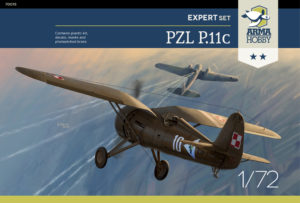 Advertisment
Advertisment
Flight of the last chance
In such situation commander of the “Pomorze” Army gen. Władysław Bortnowski ordered the III/4 Fighter Wing to strafe German columns on the Łasin-Gruta road moving to Grudziądz direction. As the commander of the Army’s aviation protested, argueing that the light fighters are not suitable for such action, Bortnowski explained that the main reason of this attack is not the inflicting real losses to the Germans, but to support Polish ground forces morale by showing them friendly airplanes’ action. It was allowed by the regulations in case of “the decisive battle”. We don’t know if the fighters’ sacrifice was the decisive factor, but finally 16th Division managed to hold the line for whole day and perform organized retreat on the next morning, so we can assume that General Bortnowski’s decision was not senseless suicide, but reasonable action of the experienced commander, and the sacrifice of Cpt. Laskowski and his two fellows was not wasted.
Captain Laskowski’s airplane
PZL P.11c, on which Cpt. Florian Laskowski fought and died, is an airframe from the late production series with serial number “8.108” painted on the fuselage side in black and red. Its tactical side number is white “55”, typical for III/4 Wing two-digit code: 141. Squadron had 5x numbers, while 142. Squadron 6x, (“x” stand for consecutive airplane number in the squadron). Squadron marking: red flying duck with blue head and wings,slightly ovelaped the number. The national markings, the checkerboards, are typical for that period: white and red on the top wing surface and fuselage and low-visibility without the white fields on the wing undersurfaces. Undersurface tactical number is “504 T” in black. The airplane had starboard wing replaced with one from earlier production series (note the bomb racks placed closer to the struts, outside of the checkerboard). Type marking “P.11c” on the tail in red. The airplane was equipped with radio, which is indicated by the aerial mast on the tail and blister on the fuselage side under the starboard wing root.
All the photos of the PZL P.11c of Captain Laskowski comes from Dr. Tomasz Kopański collection.
Recommended reading:
- Łukasz Łydżba. Toruniacy nad frontem. Interwencja naziemna i wymiatanie III/4 Dywizjonu Myśliwskiego 2 września 1939 roku. „Technika Wojskowa Historia” 2/2017. Wyd. Magnum-X, Warszawa
- Polish Fighter Colours 1939-1947. Praca zbiorowa. Stratus, Sandomierz 2016
- Stanisław Skalski. Czarne krzyże nad Polską. MON, Warszawa 1957
Modeller, son and father of a modeller. Loves digging through references and analysing old photographs. He builds aircraft, ship and vehicle models, the older the better. He has a weakness for Polish equipment, but does not despise the RAF, FAA and Great War topics. A journalist by training.
This post is also available in:
 polski
polski



